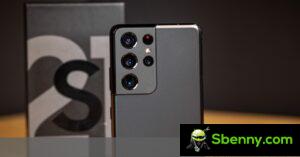The Sony LinkBuds S, also known as the WF-LS900N, are Sony’s latest truly wireless earbuds. They’re also Sony’s smallest and lightest noise canceling earphones, 40% more compact than the flagship WF-1000XM4.

Despite their smaller size and price, the LinkBuds S offer a very similar feature set to the pricier WF-1000XM4, including active noise cancellation and ambient mode powered by the same integrated V1 Processor SoC, LDAC, and high-speed wireless audio connection. resolution, multipoint, 360 Reality Audio and DSEE Extreme AI upscaling. It also includes what Sony says is the best-ever call quality in truly wireless headphones, potentially making them even better for calls than the top-of-the-line model.
At $200, the LinkBuds S are about $80 less expensive than the WF-1000XM4 but are still a bit pricey for wireless earbuds. Let’s see how they behave.
Design
The LinkBuds S design is a breath of fresh air from most other truly wireless Sony models. Most of them had unnecessarily chunky designs, and I had comfort issues with both the WF-1000XM4 and its predecessor.

The LinkBuds S are delightfully small and light, and I totally believe the 40% smaller claim, which was a much-needed size cut from the 1000XM4. They slip easily into your ears and can stay there all day without making their presence felt.
The case is also smaller and (more importantly) thinner than the 1000XM4 case, both smaller than the case that comes with the 1000XM3. This makes the LinkBuds S case much easier to carry around in your jeans pocket.

Both the earphones and the case have a textured matte surface that I’m ambivalent about. You get three color variants of Black, White and Beige, with an additional Earth Blue variant offered in some regions. The first three have the same monotonous color and texture and look quite boring. The Earth Blue variant, made from recycled water bottles, has a cloudy pattern that looks a little more interesting.
The earphones are IPX4 water resistant but the charging case is not.
Software
LinkBuds S are compatible with Sony’s Headphones Connect app. The app has gotten bloated over the years with a number of additional features, many of which aren’t worth using, making the app slower to load and awkward to set up.
Among the handy things you can do in the app, you can enable multi-device pairing, which shows both connected devices and any other previously paired devices in the app. Even if one of the paired devices is a PC, you can still control it via the app as long as the app is installed on the second paired device.
The app also lets you change the ANC settings, which no longer let you adjust the level of ANC as it now always adjusts automatically. However, you can adjust the ambient sound level and enable focus only for vocals. There’s also the handy Talk to Chat feature, which automatically lowers the volume and enables ambient sound when you start talking.
There is also a six-band EQ with multiple presets. This, along with your DSEE settings, is saved on the earbuds, so you adjust them once you transfer them to any other device you pair them with.

DSEE Extreme is an AI-based upsampling function to reconstruct data from compressed audio. It works right on the earphones themselves, so it’s more or less just upsampling the data it gets from the phone and not necessarily the original content. It also only works on codecs including and below 48kHz. This includes SBC, AAC and LDAC if you manually set it to 44.1kHz or 48kHz. It does not work if you are using LDAC in 88.2kHz or 96kHz mode.
This means that even if you are playing MP3 files at 64kbps, as long as you are using LDAC in its default 96kHz mode, the DSEE Extreme feature will never activate. This doesn’t make sense because Sony describes DSEE Extreme as upscaling “real-time compressed digital music files”. The implication here is that the source files are enlarged when in reality it only enlarges the Bluetooth data sent from the phone. It also doesn’t matter if you’re using 330kbps, 660kbps, or 990kbps LDAC, and it basically won’t work if it detects that you’re using 88.2kHz or 96kHz sample rate for Bluetooth.
Moving forward, the app also lets you configure HRTF for Sony’s 360 Reality Audio feature. He needs to take pictures of the head and ears to create a HRTF or head-related transfer function that helps him correctly map 3D audio sources to the specific shape of the head and ear. While interesting, the unfortunate reality is that 360 Reality Audio is a dying format (not that it ever took off) and is supported by very few streaming services for very few tracks. Anyone familiar with Sony’s history will know the brand’s affinity for their own proprietary standards, but I think it’s time we jumped on the Dolby Atmos train like everyone else.
You can also change the functions assigned to the touch sensors on each earbud. You can choose between ANC options, playback controls and volume control. By default, the left earphone is set to control ANC and the right to control playback. This leaves the rather important volume unallocated by default, and you’ll have to delete one of the other two if you want to. It’s frustrating to be forced to choose a whole set of options for each side rather than individual features for specific gestures like on other headsets.
One of the unintended drawbacks of the LinkBuds S being so small is that the touch sensor area is quite small and hard to hit. It took me some time to get used to and even then I was often hitting the edges rather than the middle. And you really have to hit the exact center, otherwise the gestures are not registered. It’s really easy for gestures to go wrong unless you absolutely nail the motion every single time, which is rarely the case.
Performance
Audio quality
The LinkBuds S use rather small 5mm dynamic drivers, a 17% reduction from the WF-1000XM4’s already small 6mm drivers. You still get Bluetooth 5.2 connectivity with SBC, AAC and LDAC support up to 32-bit, 96kHz, 990Kbps.
Similar to the WF-1000XM4, the LinkBuds S have a rather relaxed sound with a warm low end and a somewhat dark and cloudy high end.
Bass response on the LinkBuds S is prominent but not to the same extent that you find on many other Sony products. It is mostly concentrated in the bass and low-mid regions and does not penetrate the midrange. The bass boost has a gentler curve, which doesn’t distract too much from the original tonality. Instead, it mostly adds warmth and rumble to the recording without being overbearing. It’s a little lumpy and not fast, but it works for the overall relaxed sound.

Midrange performance is good enough for the most part. Voices and instruments have a very natural timbre and tonality, making them lush and pleasant to listen to. There aren’t a lot of details sorted out or intricacies on display here, but that’s to be expected from Bluetooth headsets.
The upper midrange and treble are largely the area of concern for the LinkBuds S. While not quite as dark as on the 1000XM4, treble performance is a bit muted, which dulls some instrumental detail and breathing. of the voice. This results in a somewhat duller sound which, depending on the recording, may or may not be audible. Brighter recordings aren’t affected much by this and some songs actually sound quite good regardless of this tuning. Others have a noticeably muffled and veiled sound and are not quite as pleasant.
The overall sound is still quite soothing and pleasant to listen to during longer listening sessions. The tuning, while not perfect, works reasonably well for a wide range of genres and content. You can get good results using the EQ or just using the Bright preset, which seems to make the sound balanced enough for my ears. But if you don’t want to get to work and want a more balanced sound out of the box, you could buy the Samsung Galaxy Buds 2 Pro or AirPods Pro 2 instead.
Microphone quality
The LinkBuds S have excellent recording quality for a pair of Bluetooth headsets. Vocals in quiet environments sound very nice with just a hint of a whisper due to background noise reduction. The quality is good enough to be mistaken for entry-level wired headset microphones, which is not an honor I give lightly.

In noisier environments, the earphones still work well. Initially you can hear background noise, but as soon as you start talking the algorithm does a great job of filtering out everything else. Your voice suffers a bit and doesn’t sound as good as in a quiet room, but it’s still perfectly audible.
My only issue was that while the earphones do pass through some outside noise while you’re talking, it’s not enough for you to hear your voice clearly, which makes talking really awkward. I found it much easier to talk if ambient audio mode was enabled as it amplifies your voice before sending it.
Noise cancellation
The LinkBuds S have excellent active noise cancellation performance. They use the same custom processor as the WF-1000XM4, so noise cancellation performance should be the same. That said, I didn’t have a pair of 1000XM4s on hand to compare when testing the LinkBuds S, so I can’t confirm if that’s the case.
On a recent flight, sitting all the way to the rear of the aircraft, the LinkBuds S were able to drown out most ambient noise, to the point where removing the earbuds was a truly shocking experience at times due to the amount of noise suddenly flooding. For comparison, I also tried the Google Pixel Buds Pro side by side and the Google buds seemed to be only half as effective, to the point that its ANC seemed to be mostly shallow. To say it wasn’t even close would be an understatement.

Sony’s ambient sound mode also works quite well. It still doesn’t sound very accurate, especially if you turn it all the way up. I found it best left at level 16 instead of the maximum 20 where it sounded quite natural, with higher levels better if you really want to hear every rustle of your clothes.
Latency
The LinkBuds S have decent latency performance. When testing with a phone, video playback wasn’t a problem as most phones these days will automatically build in latency to sync audio and video for zero lag. When tested in games and other latency-sensitive apps, latency performance was adequate with AAC and LDAC when using 330kbps and 660kbps.
The earbuds individually pair directly to the phone, which reduces latency compared to using a master-slave setup where only one connects to the phone and the other to the first headset. However, when using 990kbps LDAC, the headset appears to revert to using the master-slave setup, which is why latency was higher in this mode. The good (or bad?) thing is that most phones will never default to 990kbps, so the latency should be fine unless you manually switch it from the developer settings.
When paired with a PC, I was only able to test with SBC and latency was mostly good. There’s no auto-syncing for video players on Windows, so good latency performance is needed, and the LinkBuds S performed well enough, although the slight lag was noticeable.
Connectivity
The LinkBuds S had good connectivity performance in testing. Only on one occasion did one of the earphones wobble and kept floating during playback. This was fixed quickly by putting it in the case and plugging it back in. Other than that, there were no connectivity issues on any of the test devices.
Battery life
The LinkBuds S have a claimed battery life of 6 hours of continuous playback with ANC enabled and 1 hour after 5 minutes of charging. As usual, Sony doesn’t specify which codec was used for these claims.
When tested with AAC, the LinkBuds S lasted 6 hours and 50 minutes of continuous playback. A 5-minute charge yielded 1 hour and 14 minutes of playback.

When tested with LDAC locked at 990 kbps, the LinkBuds S lasted 4 hours and 5 minutes. A 5-minute charge yielded 44 minutes of playback.
It’s worth noting that DSEE Extreme, as always, has short battery life. Using with AAC reduced battery life to 4 hours and 47 minutes. That’s quite a drop for a feature that makes no perceptible difference to audio quality.
Charging on these is done via a cable only, as the LinkBuds S lack wireless charging for the case.
Conclusion
The Sony LinkBuds S or WF-LS900N are a great pair of truly wireless earbuds. They do just about everything right, but are particularly good at comfort, noise cancellation, and microphone quality. Sound quality and battery life are both quite good, if not best in class. My only gripe would be the app, which is getting bloated and cluttered and badly in need of some polishing.

At a current price of around $129, the LinkBuds S are a good deal, more so than the pricier WF-1000XM4, which I don’t think are worth the extra money anymore. LinkBuds S offer most of the benefits and performance of more expensive wireless earbuds at a significantly lower price.







Start a new Thread